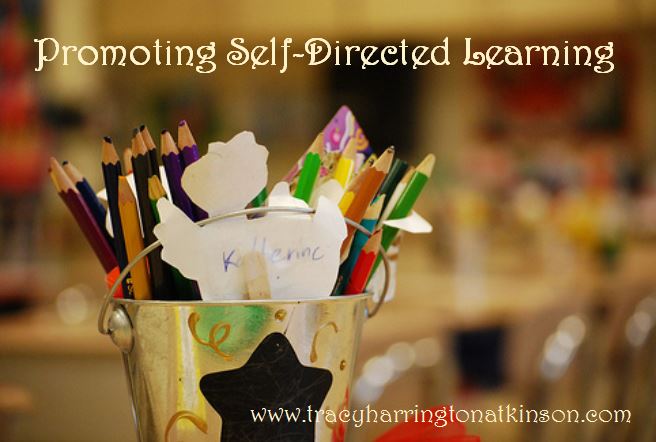 Many students simply do “not possess the confidence, positive self-concept, or independence to involve themselves in self-directed learning” (Guglielmino, 2006, p. 1). In order for students to participate in a self-directed learning atmosphere, they must “be motivated to identify specific goals for success, develop a learning plan or contract, implement that plan, and then be able to evaluate the level of progress personally achieved. A plan for self- directed learning should also incorporate a component for continuous improvement that will provide students with an ongoing opportunity to enhance the quality of learning. Continuous self-evaluation or self-efficacy is a necessary component of self-directed learning. Students must be able to monitor that they are moving towards the goals that they have identified or whether modifications are necessary to either the goals or the steps beings taken” (p 2).
Many students simply do “not possess the confidence, positive self-concept, or independence to involve themselves in self-directed learning” (Guglielmino, 2006, p. 1). In order for students to participate in a self-directed learning atmosphere, they must “be motivated to identify specific goals for success, develop a learning plan or contract, implement that plan, and then be able to evaluate the level of progress personally achieved. A plan for self- directed learning should also incorporate a component for continuous improvement that will provide students with an ongoing opportunity to enhance the quality of learning. Continuous self-evaluation or self-efficacy is a necessary component of self-directed learning. Students must be able to monitor that they are moving towards the goals that they have identified or whether modifications are necessary to either the goals or the steps beings taken” (p 2).
Despite the debate in who is capable of portraying self-directed learning characteristics, few educators debate the worth. Guglielmino (2006) reflects “self-directed learning is a life-long strategy that allows the individual to take the initiative in determining his/her own learning goals, select a personalized strategy, and then decide the value of what was learned” (p 1). The results of developing lifelong self-directed learning principles is that an adult successfully demonstrates his capability to participate in the many roles required of him: learner, self (with a unique identity), friend, citizen, family member, worker, and leisure time user (Knowles, 1991).
Guglielmino (2006) states that many adults fail at the ability to learn and feel incapable of succeeding in a learning capability because they have encountered too many obstacles for which they have no ability to overcome. Additionally these obstacles are “compounded by the lack of traditional guidance services to assist them when returning to a formal educational settings. Many adult students also exhibit a greater fear of failure and need to be “other directed.” They do not want to fail in the presence of their friends and family. These barriers to success often interfere with the adult student striving to become self-directed” (p 2).
The question remains if adults received self-directed learning examples at a young age if they would not stop when they encounter obstacles to their learning environment. Teachers can provide young students with positive learning experiences through motivation, goal setting, self-efficacy, and even modeling self-control (Guglielmino, 2006). Teachers can encourage the attitudes, values, skills and personality traits which are consistent with independent learning environment such as “initiative, independence, responsibility, self-discipline, self-confidence, and curiosity, as well as planning, time-management, and study skills” (p 3).
Teachers can demonstrate and implement self-directed learning principles by creating an atmosphere of trust and mutual respect where the learner contributes knowledge and participates in the decision making process. Creating a collaborative learning environment changes the role of the teacher from information giver to director or guide (Barell, 2010). Instructors can nurture students’ desire to learn and as a result their efficacy or their power to achieve a goal.
Teachers need to motivate students to pursue self-directed learning principles to the end of a lifelong learning desire. Younger students need to be taught how to deal with problems as they arise in their quests and be empowered with problem solving options. As a result these tools move the learning from needing extrinsic motivation to relying on intrinsic motivation (Gibbons, 2008).
The greatest benefits of the application of self-directed learning is the type of learner it creates. The learner moves from being a reactive recipient of knowledge to a proactive procurer for information. Self-directed learners demonstrate a greater awareness of themselves and their responsibility to contribute to their society and community. Additionally, these learners develop the characteristics of “persistence, independence, self-discipline, self-confidence and goal-oriented” (Atherton, 2009, p. 1) as well as evolving their leadership skills. “One of the most important tasks of the teacher is to raise student awareness of their roles in learning” (ibid., p. 1).
Sources
Atherton, J. (2009). Learning and teaching; learning contracts. Retrieved from www.learningandteaching.info/teaching/learning_contracts.htm
Barell, J. (2010). Critical Issue: Working Toward Student Self-Direction and Personal Efficacy as Educational Goals. Retrieved from www.ncrel.org/sdrs/areas/issues/students/learning/lr200.htm
Gibbons, M. (2008). Motivating Students And Teaching Them to Motivate Themselves. Retrieved from www.selfdirectedlearning.com/article2.html
Guglielmino, L. (2006). Promoting Self-Directed Learning for the Florida GED PLUS Student. Retrieved from www.floridatechnet.org/gedplus/2006Institute/SuccessfulDistanceLearning/PromotingSelfDirectedLearning2.pdf
Knowles, M. (1991). Lifelong learning: A dream. Retrieved from www.newhorizons.org/future/Creating_the_Future/crfut_knowles.html
By Tracy Harrington-Atkinson
Tracy Harrington-Atkinson, mother of six, lives in the Midwest with her husband. She is a teacher, having taught elementary school to higher education, holding degrees in elementary education, a master’s in higher education and continued on to a PhD in curriculum design. She has published several titles, including Calais: The Annals of the Hidden, Rachel’s 8 and Securing Your Tent. She is currently working on a non-fiction text exploring the attributes of self-directed learners: The Five Characteristics of Self-directed Learners.

Comments are closed